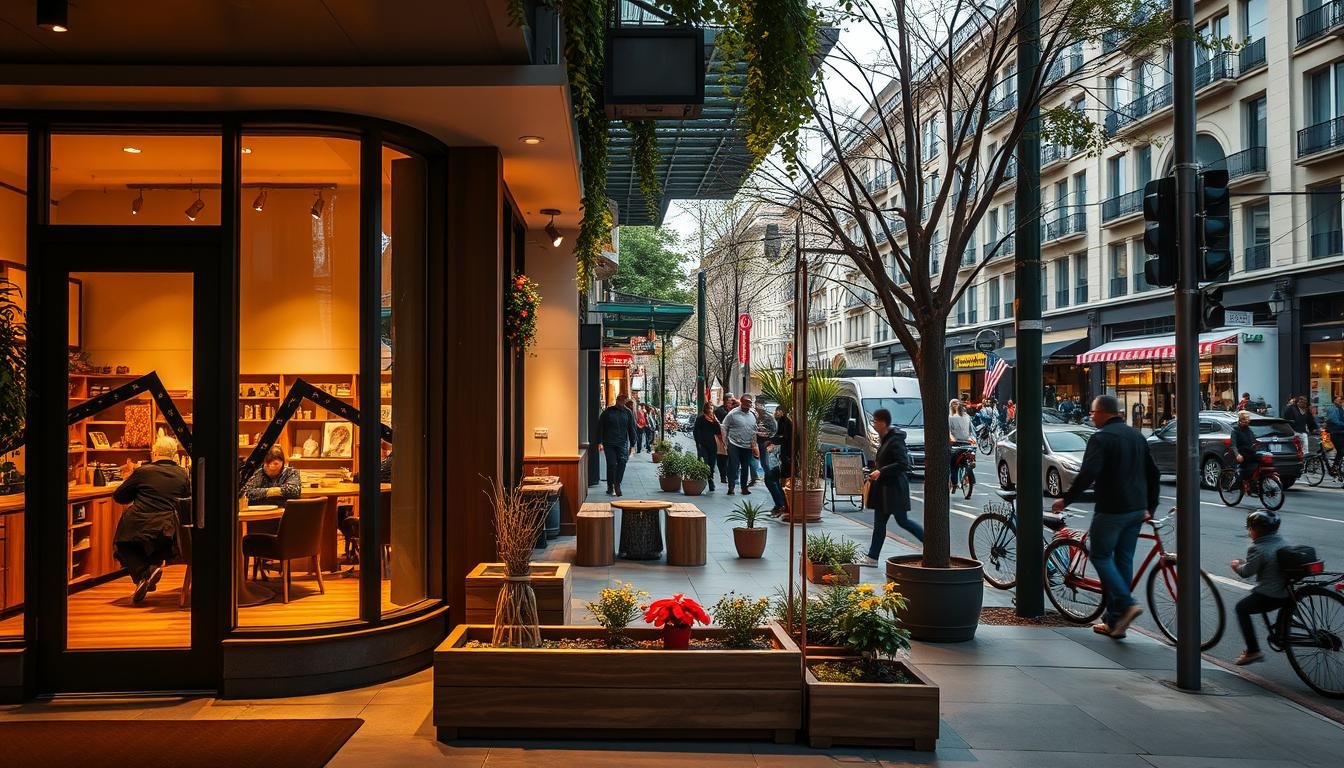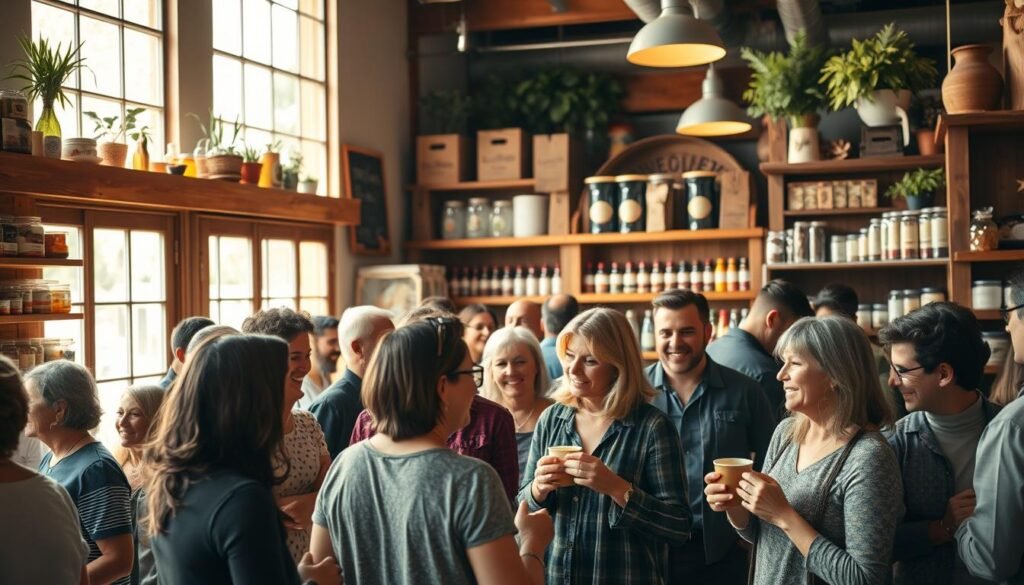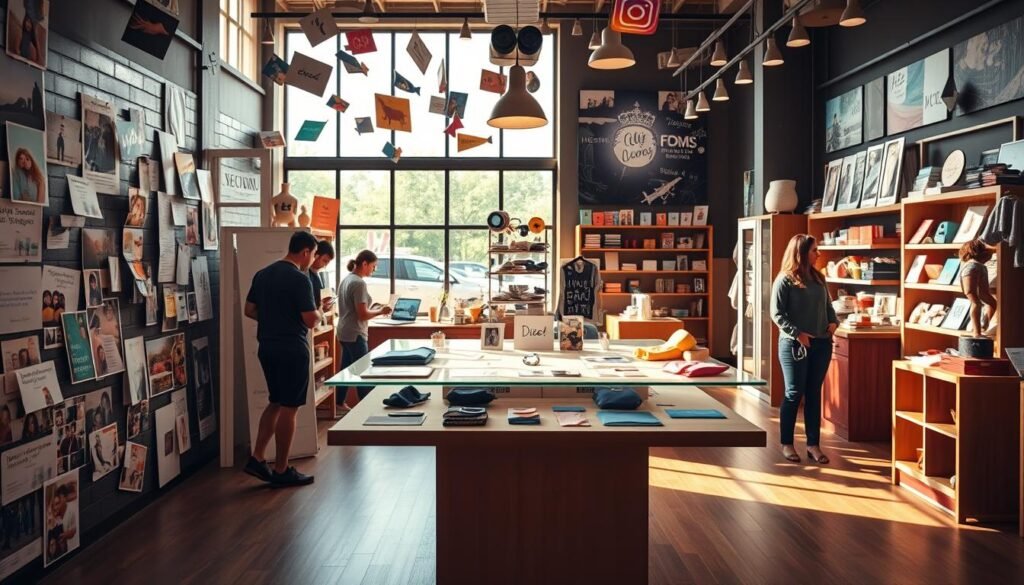Address
304 North Cardinal
St. Dorchester Center, MA 02124
Work Hours
Monday to Friday: 7AM - 7PM
Weekend: 10AM - 5PM
Address
304 North Cardinal
St. Dorchester Center, MA 02124
Work Hours
Monday to Friday: 7AM - 7PM
Weekend: 10AM - 5PM

Can a loyal customer base be the driving force behind your store’s long-term success? The answer lies in building a strong community around your store.
Fostering a sense of belonging among your customers can lead to repeat business and positive word-of-mouth. This ultimately drives growth.
By implementing effective strategies, you can cultivate a loyal community that advocates for your store.
In today’s competitive e-commerce world, building a community around your store can really set you apart. A community lets customers connect with your brand in a meaningful way. This builds loyalty and helps your store grow.
Customers love being part of a community because it makes them feel like they belong. This feeling keeps them coming back, as they feel valued and connected.
Being part of your online store’s community is more than just shopping. It’s a shared experience. A study by Harvard Business Review found that community members are more likely to shop again. This is because they feel a strong connection to the brand.
Customers who feel connected to a brand are more likely to share their experiences and give feedback. They also participate in events and discussions. This not only strengthens their loyalty but also turns them into brand advocates.
A strong community brings many benefits to your store. It increases customer loyalty and retention, driving store community growth. By engaging with your customers and creating a welcoming space, you build a loyal community that supports your store.
A strong community also gives you valuable feedback and insights. This helps you improve your products and services. Plus, a loyal community can be a powerful marketing tool, promoting your store through word-of-mouth and online reviews.
To build this, focus on creating meaningful interactions with your customers. Use social media, email newsletters, or in-store events. The key is to be consistent and genuine in your efforts to build and nurture your community.
Knowing your target audience well is key to creating store community building strategies that succeed. To build a community around your store, you must understand who your customers are.
Data from Facebook Audience Insights is very helpful. It gives you insights into your target audience’s demographics and interests. This includes their age, gender, location, and what they love.
It’s important to know the demographics of your target audience. This means understanding their age, gender, and where they live. For example, if your store is in the United Kingdom, knowing local tastes and cultural differences is crucial.
Interests are also vital. What do your customers care about? Are they into sustainability, fashion, or tech? Making your community-building efforts match their interests can boost engagement.
After gathering data on demographics and interests, you can start building customer personas. These are fictional characters that represent your ideal customers.
Creating detailed personas involves noting their behaviors, preferences, and challenges. For instance, a persona might be a young professional in London who loves sustainable products and is active online.
By building these personas, you can tailor your store community building strategies to engage with your target audience. This encourages them to join your community.
To build a loyal community around your store, using effective engagement strategies is key. Engaging with your community boosts customer loyalty and spreads the word about your brand.

Hosting events and workshops is a great way to unite your community. A survey by Eventbrite found that 95% of people think events strengthen brand connections. You can hold in-store events, workshops, or webinars that match your audience’s interests.
For example, a store that sells outdoor gear could host a workshop on hiking safety or a webinar on eco-friendly camping. These events not only keep your current customers engaged but also draw in new ones.
Using social media is another smart way to engage with your community. Create a business page on Facebook, Instagram, and Twitter. Then, post content that invites people to interact, like polls or quizzes.
Engage actively with your followers by quickly responding to comments and messages. You can also use social media to share your events and loyalty programs, reaching more people.
Creating loyalty programs is a direct way to thank your loyal customers. You can set up a program that gives points for every purchase. These points can be used for discounts or special products.
To boost your loyalty program, offer exclusive benefits like early access to new products or special discounts during sales. This keeps customers coming back and makes them feel appreciated.
Working with nearby businesses is a smart move for your store. It helps build a strong community. Together, you can make a lively local economy that helps everyone.
A study by Local Data Company shows 71% of people like to support local shops. This shows how teaming up can make your store more visible. It attracts customers who want to shop locally.
Cross-promotion is a great way to get more customers. You and your partners can reach new people by promoting each other. This way, you grow your market without spending a lot more.
You could host events together, run joint ads, or offer special deals. These actions boost sales and help local businesses feel connected.
Creating a local network is more than just promoting together. It’s about helping local businesses grow. You can do this by working together on workshops, sharing resources, and supporting local projects.
This helps the local economy and makes your store a community center. It builds loyalty and improves your reputation in the area.
Key actions to consider:
By teaming up with local businesses, you can make your store a hub of activity. This approach to store community development benefits both your business and the local economy. It’s a strategy for lasting growth and loyal customers.
Using online platforms is key to building a loyal community for your store. Today, online groups are vital for keeping customers engaged and loyal.

Creating online communities lets you connect with people who have similar interests. You can use many platforms, like social media groups and forums.
Benefits of Online Communities include better customer interaction, improved support, and insights into what customers like.
Forums and chat groups help you start discussions and offer support. They’re great for answering questions and making community members feel part of something.
A report by Grand View Research shows the online community market is growing fast. This shows how online communities can help businesses grow.
To make the most of online platforms, try these tips:
By following these tips, you can create a strong online community. This community will help your store grow and keep customers loyal.
To build a strong store community, listening to your customers is key. This helps you spot areas to improve and make better decisions. It’s all about enhancing your community-building strategies.
Customer feedback is crucial for knowing what your community wants. A Microsoft study showed that 77% of people like brands more when they listen to feedback. This shows how important it is to create a feedback loop.
Valuing what customers say helps your community feel more connected. This can boost loyalty and make people more likely to support your store.
There are many ways to get valuable feedback from customers. These include:
Using different channels can give you a full picture of what your community needs.
| Feedback Channel | Response Rate | Insight Quality |
|---|---|---|
| Surveys | High | Detailed |
| Social Media | Medium | Varied |
| Email Newsletters | Low | Specific |
By looking at the data from these channels, you can make smart choices to improve your store community.
Creating good content is key to building a loyal community around your store. It helps you connect with your customers on a deeper level. A content strategy that speaks to your audience can boost engagement, loyalty, and community growth.
A report by Content Marketing Institute shows 70% of B2B marketers are making more content than before. This shows how vital content is in marketing. It’s a powerful way to build and grow a community around your store.
Blogs and newsletters are great for sharing news, tips, and insights. They help you show your store’s expertise, attracting and keeping customers. This makes your store a leader in your field.
To make blogs and newsletters work, focus on topics your audience cares about. Use storytelling techniques to engage your readers. Also, make sure your content is easy to find online.
Video content and live streams are interactive and immersive. They let you share behind-the-scenes, product demos, and live events. This brings your community closer to your store.
When making videos, aim for high-quality visuals and sound. Think about what your audience likes. Live streaming is especially good for real-time interaction. It lets you answer questions and comments right away, strengthening community bonds.

Using blogs, newsletters, videos, and live streams in your strategy can make a lively community. The secret is to be consistent, true to yourself, and listen to what your audience wants.
Using user-generated content is key to a lively store community. Encourage your customers to share their experiences, photos, and stories. This builds a sense of belonging and makes your brand more authentic.

User-generated content (UGC) is a strong tool for boosting online store community engagement. A study by Stackla shows 79% of people are influenced by UGC when buying. To make the most of this, you can:
These steps not only boost engagement but also gather real content that attracts more customers.
Showing off community contributions makes customers feel valued. You can do this by:
By doing this, you foster a sense of pride and connection among community members. This strengthens their bond with your brand.
Key Benefits of User-Generated Content:
Measuring community engagement is key to knowing how well your community-building efforts are doing. It helps you see how involved your community is. This way, you can improve your strategies to better serve them and build a more loyal customer base.
To measure this well, you need to look at certain metrics that show how healthy and active your community is. Key performance indicators (KPIs) are very important for this.
KPIs like engagement rates, customer retention, and how fast your community grows are crucial. For example, a high engagement rate on social media shows a strong bond within the community.
A Hootsuite report shows that 64% of businesses use social media analytics tools to track engagement. This shows how vital these metrics are.
Choosing the right tools is essential for tracking community engagement well. Social media analytics software and customer feedback platforms are great for getting useful insights.
With these tools, you can collect data on your community’s engagement. This helps you make better decisions to improve your community-building efforts.
Building and growing your community is key. It’s vital to keep up with new trends. This means using new tech and ideas to make your community better and more lasting.
New tech can really boost your community. For example, using augmented reality (AR) and virtual reality (VR) can make your store more fun and interactive. It’s a great way to draw in customers.
Today’s shoppers want businesses to be green and fair. A report by GlobalData shows this is a big trend. By being eco-friendly, you can build a positive community around your store.
Keeping up with these trends helps your community grow strong. It keeps you ahead in the market too.
Building a community around your store is key. It helps you build a loyal customer base. It also drives long-term growth and encourages repeat business and positive word-of-mouth.
To find your target audience, you need to know their demographics, interests, and behaviours. Create customer personas to tailor your community-building strategies effectively.
Good strategies include hosting events and workshops. Also, use social media platforms and create loyalty programs to reward your loyal customers.
Use online platforms by creating online communities. Use forums and chat groups for discussions. Provide customer support to build a strong online presence.
Customer feedback is crucial. It helps you understand your community’s needs and preferences. It also shows areas for improvement and guides your decisions.
Track key performance indicators (KPIs) like engagement rates and customer retention. Use tools like social media analytics software and customer feedback platforms.
Future trends include embracing technology and innovation. Also, incorporate sustainability and ethical practices into your business model. This fosters a positive and responsible community.
Encourage customers to share their photos and stories. Highlight community contributions on your social media channels or website. This fosters a sense of ownership and appreciation.